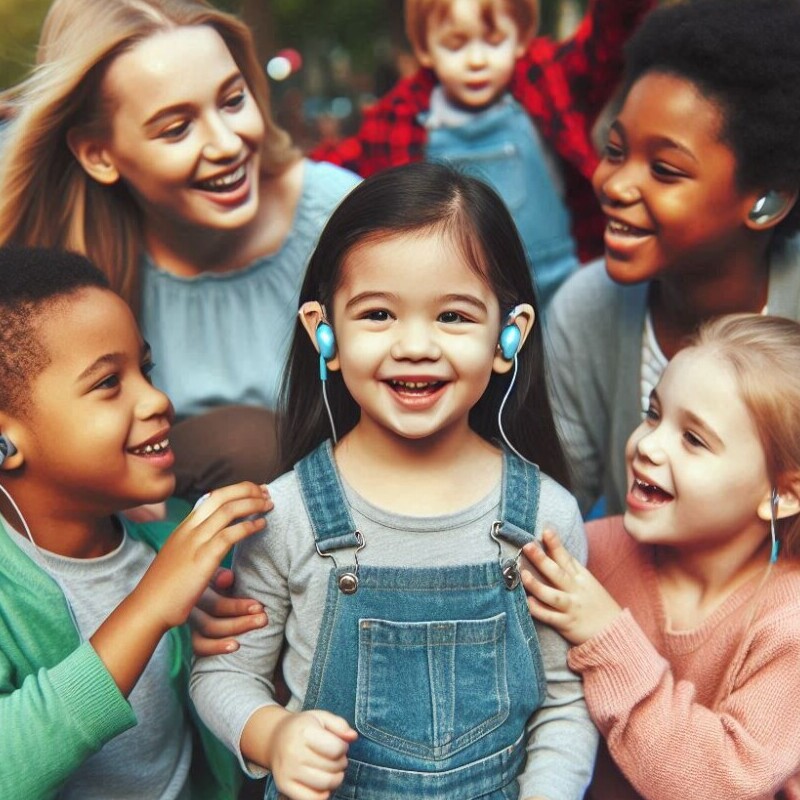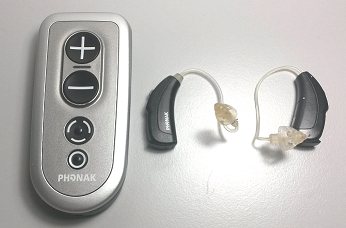Identifying early signs of hearing loss in children can be challenging and essential for ensuring proper development.
Recognizing these early indicators helps families and healthcare professionals make informed decisions about further evaluations and interventions.
In this article, I share insights into the early symptoms, evaluation methods, and practical tools that can support parents and caregivers in addressing hearing concerns as soon as possible.
Understanding Early Signs of Hearing Loss in Children
The early signs of hearing loss might be subtle but are important to recognize. Children may show different behaviors compared to their peers.
For example, they might not respond consistently to sounds, seem distracted, or even develop speech and language skills at a slower rate. Even if these signs seem minor, early detection and intervention can help reduce further complications.

In many cases, hearing loss in children can be congenital or develop during early childhood. If parents notice any unusual patterns in behavior or communication, consulting with a specialist is advisable.
Awareness of these early symptoms helps guide further diagnostic testing to determine the extent of the hearing loss. Parents are encouraged to keep detailed notes of behavioral patterns, repeating sound delays or concerns, as these records can be very important during a professional assessment.
Furthermore, caregivers must look closely at changes over time rather than reacting to a single instance. Taking time to notice recurring behavior can provide deeper insight into whether further investigation is needed.
This proactive monitoring creates a secure framework that benefits the child’s overall health and learning experience in the long term.
Beyond immediate signs, understanding the context in which a child develops is critical. Family settings, social interactions, and learning environments all contribute significantly to how auditory skills develop.
When multiple factors align that indicate potential issues, it becomes even more important to initiate a timely evaluation.
As far as hearing loss is concerned, check out my article where I talk about some medical treatments for hearing loss.
Key Indicators and Warning Signs
There are several key indicators that may point to early hearing loss in a child. Recognizing these signs early can lead to a more effective intervention strategy. Some of the most common warning indicators include:
- Lack of Response: A child who does not react to everyday sounds such as their name being called or doorbell ringing may have hearing issues. This lack of response is often noticed both at home and in more dynamic settings like playgrounds or classrooms.
- Delayed Speech Development: Hesitation or a delay in the development of speech and language skills compared to peers can be a red flag. Parents might notice that their child takes longer to form words or only uses limited vocabulary even as they grow older.
- Frequent Requests for Repetition: If a child regularly asks for statements to be repeated, it may indicate difficulty in hearing clearly. Such repeated inquiries often signal that background sounds may be interfering with their ability to process spoken language.
- Tendency to Turn Up the TV: A preference for holding the volume high or disengaging from background conversations might suggest hearing challenges. Often parents observe that the child seems unusually comfortable with loud sounds, which might be a compensatory measure.
- Behavioral Changes: Increased irritability or seeming inattentiveness during group activities or classes might be linked to auditory processing difficulties. These behavioral changes may be subtle but persist over time, warranting professional observation.
Caregivers need to observe these tendencies over time before jumping to conclusions. Sometimes, these signs may be related to other developmental factors.
However, taking note of these behaviors and discussing them with a pediatrician or an audiologist is an important first step. Once patterns emerge, parents can work collaboratively with professionals to determine whether further testing is needed.
If you can, it would be advisable to use a variety of strategies to track these behaviors. Maintaining a journal of when and how the behaviors occur can be incredibly useful.
In addition, engaging the child in varied social and educational settings may reveal whether these early indicators are consistent or situational.
My Story: One day when I was kid watching television, my father was calling out to me from behind, and I did not respond. My dad thought that I was ignoring him. He then noticed this behavior on some occasions. And that’s when my mum and dad, decided to take me for a hearing test.
That was the time when I first became aware that I had a hearing problem. Feel free to check out my full story here.
Initial Evaluations and Observations
When early signs of hearing loss present themselves, a structured approach to evaluation is essential.
Like with Dad observing my hearing, you too can start by closely observing the child in different settings—at home, during playdates, at school, and in social gatherings. Often, these early observations form the basis for a professional evaluation and help build the case for further intervention.
Early evaluations generally start with a detailed review of the child’s developmental history, followed by a series of hearing tests. Types of assessments may include:
- Behavioral Observation Audiometry (BOA): This test involves observing the child’s reactions to different sounds in a controlled environment. It allows specialists to capture subtle responses that might not be apparent in a less structured setting.
- Otoacoustic Emissions (OAE): A non-invasive test that checks the inner ear’s response to sound using small ear probes. This test is quick and often the first step in ruling out more complex issues.
- Auditory Brainstem Response (ABR): This test measures how sound travels along the inner ear and reaches the brain and is often used when the child is too young to participate actively in behavioral tests. It provides crucial insights into the neurological pathways of hearing.
For many parents, having an idea of what tests might be involved can ease some of the anxiety that accompanies the process.
In many cases, insurance plans and healthcare providers offer additional resources that help smooth the way for early diagnosis. Investing in a professional hearing screening can provide peace of mind and additional clarity regarding the next steps.
The more information parents have at the outset, the better they can support and advocate for their child.
Detailed test results can highlight subtle differences in a child’s hearing ability and even suggest other areas where developmental support might be beneficial.
It is also helpful to note that these early testing methods are continually being improved through the latest technological advances.
New testing protocols and devices are being introduced that are specifically tailored for very young children, making the entire process less intimidating and more accurate.
Challenges in Early Diagnosis and Practical Considerations
The adventure from recognizing early signs to obtaining a clear diagnosis is not always straightforward.
Several challenges might arise along the way. Having realistic expectations about the process can help caregivers prepare and stay proactive.
One common challenge is distinguishing between hearing loss and other developmental delays.
Since many of the early signs of hearing loss, such as language delays, can be attributed to different factors, an all-in-one evaluation is necessary.
Understanding what to anticipate during each stage of the process can ease some of the stress associated with uncertainty and help parents plan accordingly.
- Communication Delays: Some children might experience delays not solely due to hearing loss but as part of natural variations in development. This means that while communication delays are a sign, they are not always definitive proof of hearing issues. Delays can also occur because of factors like multilingual environments or even early shyness.
- Environmental Factors: Background noise, both at home and in school, can mask early signs of hearing difficulties. Cultural factors and the physical setting—like an overcrowded classroom—can also affect how a child responds to auditory cues. It is advisable to create a quieter space for initial evaluations so that even mild deficits can be noticed.
- Family History: Children with a family history of hearing loss need closer monitoring. Knowing whether genetics might play a role in a child’s hearing ability can prompt earlier and more frequent check-ups. In these situations, regular audiological assessments are really important to catch any emerging issues promptly.
- Physical Conditions: Conditions such as ear infections or otitis media can temporarily affect hearing. Consistent monitoring helps differentiate between temporary impairments and more permanent hearing challenges. Often, a series of tests over a period is required to distinguish between a short-term issue and a long-lasting condition.
This phase of diagnosis is filled with many questions.
Communication Delays
Delays in speech and language development are not uncommon among children with hearing loss. These delays might manifest as difficulty pronouncing words, forming complete sentences, or even a reluctance to engage in conversations.

Monitoring these delays over time and discussing them with a pediatrician is a pragmatic approach. Early interventions, such as speech therapy or consultations with an audiologist, can provide a significant boost to a child’s communication abilities.
Parents who observe persistent delays should consider a multifaceted approach to treatment.
This may include specialized tutoring, targeted exercises, and even engaging in group activities where communication is emphasized. Such structured activities are designed to bolster language acquisition and help children feel more included among their peers.
Environmental Influences
The acoustic environment in which a child grows up plays a major role in the detection and progression of hearing loss. A home filled with constant background noise—or a chaotic classroom—may mask subtle deficits in hearing. Taking steps to minimize distractions during evaluations can improve the accuracy of hearing tests and even allow for more precise observations at home.
Caregivers should arrange quiet times during the day when the child can be observed in a calm and structured setting. Simple modifications, such as reducing the television volume or setting aside a specific time for quiet play, can provide crucial opportunities to observe how the child responds to softer sounds. Over time, these observations can offer valuable insights into the child’s auditory processing skills.
Family History and Genetics
Sometimes, a genetic predisposition is responsible for hearing loss.
If there is a history of hearing difficulties in the family, it becomes even more important to schedule regular hearing assessments from infancy onward. Early genetic counseling and consistent monitoring enable professionals to tailor care and interventions specifically for each child.
Families with a known history of hearing loss should consider forming partnerships with specialists who are experienced in genetic conditions. Through early and targeted interventions, it is possible to address concerns before they begin to interfere significantly with speech, social development, or learning patterns.
ofKeeping the lines of communication open with healthcare providers can ensure that any changes in the child’s hearing abilities are promptly addressed.
Regular genetic evaluations can also be beneficial in understanding other underlying health conditions that might be associated with hearing loss. Such evaluations might reveal patterns that help predict developmental outcomes and guide long-term care plans.
The insights gained from these observations significantly influence the subsequent diagnostic steps. They underscore the value of having regular, well-planned check-ups and ensure that parents feel supported throughout the process.
Further Steps and Considerations for Support and Treatment
After the initial evaluations, families often need to consider the next set of diagnostic tests and potential interventions.
At this stage, a combination of advanced assessments and early treatment plans can be introduced, if necessary. With hearing loss, the earlier the intervention, the better the potential outcomes for both language and cognitive development.
Parents may be introduced to a range of support services, including early intervention programs and speech therapy, alongside the fitting of hearing devices if needed.
These programs are designed to help children adjust and thrive by countering the challenges posed by diminished hearing capabilities.
Current technology has opened up a world of options in terms of treatment. For instance, modern hearing aids and assistive listening devices are more discreet and effective than ever before.
Many parents appreciate that devices such as those in the child-friendly hearing aids category are designed specifically with young ears in mind.
Additionally, emerging digital therapy tools offer engaging, interactive ways to support auditory training at home.
Maintaining a proactive approach is very important.
Regular check-ups, consistent monitoring of progress, and periodic adjustments to the intervention plan can all make a significant difference. This steady oversight not only helps mitigate the shortcomings of hearing loss but also supports the overall developmental trajectory of the child.
In many cases, families also find solace in support groups where they can share their experiences and learn from others undergoing similar journeys.
Detailed follow-up appointments allow healthcare providers to adjust the intervention strategies based on the child’s progress. These sessions often include reassessments and fine-tuning of hearing devices, as well as consultations with speech therapists.
This multi-pronged approach ensures that the child receives comprehensive care tailored to their specific needs.
Diagnostic Tools and Equipment for Assessing Hearing
For a thorough evaluation of hearing loss in children, having the right diagnostic tools is extremely important.
These tools help professionals accurately assess the degree and type of hearing impairment, ensuring that any intervention is based on a clear understanding of the child’s needs.
Common equipment used in these evaluations includes:
- Hearing Screening Devices: Portable devices that quickly assess a child’s hearing ability. Many of these devices feature an intuitive interface, making the screening process simpler for both clinicians and children.
- Otoacoustic Emission (OAE) Test Equipment: Equipment used to measure the sound waves produced in the ear. Its non-invasive nature makes it an excellent choice for very young children who may not be able to verbally respond.
- Auditory Brainstem Response (ABR) Systems: Systems that capture the electrical responses originating from the brainstem after an auditory stimulus. ABR tests are particularly useful for newborns and infants because they bypass the need for active participation.
- Behavioral Observation Tools: Advanced software and digital platforms that track a child’s reactions to sound stimuli presented in various environments. These tools gather essential data that supports a more accurate diagnosis.
This range of diagnostic tools collectively builds a detailed picture of a child’s hearing health.
Frequently Asked Questions
This section addresses common concerns that parents might have regarding early hearing loss in children:
Question: What are the very first signs of hearing loss in children?
Answer: Early signs typically include a failure to react to sounds, delays in speech development, difficulties in following directions, and frequent requests for repetition. Continuous observations over time are essential for making an accurate assessment.
Question: How do I get my child tested for hearing loss?
Answer: A typical process starts with a visit to your pediatrician who can recommend a referral to an audiologist. There, tests such as OAE or ABR are performed. Many clinics also offer onsite hearing screening tools to facilitate the evaluation. Several families have reported that pediatric audiology services can be a very convenient option.
Question: Are there any long-term treatments available for children with hearing loss?
Answer: Yes, various approaches exist including the use of hearing aids, cochlear implants, and speech therapy. The treatment choice depends very important on the severity of the hearing loss and other individual factors. Early intervention using these methods can lead to significant improvements in a child’s development and learning abilities.
Question: Can environmental factors affect a child’s hearing?
Answer: Absolutely. Exposure to very loud noises over prolonged periods, recurrent ear infections, and even certain medications can impact hearing. Setting up a quiet and supportive environment at home can help both prevent and detect hearing issues early.
Conclusion
Early detection of hearing loss in children is a vital component of ensuring a healthy developmental adventure. From understanding subtle behavioral cues to using professional diagnostic tools, the process is multi-faceted and requires caregivers to stay sharp and proactive. Whether it involves monitoring communication delays or investing in the right diagnostic equipment, every step matters.
Staying informed by consulting reliable sources and experts can make the journey much easier for families. Modern technology and affordable screening devices available online have opened up numerous opportunities to address early hearing loss effectively.
I encourage parents and educators to remain attentive to these signs and continuously document any concerns that arise.
Additional community resources, support groups, and expert consultations are also very important. They offer emotional reassurance and practical guidance for parents embarking on this challenge.
Taking careful note of each behavioral change and seeking advice whenever needed paves the way for interventions that can dramatically improve a child’s auditory development.
It is not just about identifying the problem at hand.
It is about creating a better future filled with improved communication, learning, and social interaction. Every small step taken today lays the foundation for a brighter tomorrow. By addressing concerns early, families can empower a child’s growth and open doors to opportunities that might otherwise remain closed.
The path to effectively managing hearing loss might sometimes seem overwhelming.
However, regular follow-ups, tailored interventions, and continuous support from healthcare professionals make it possible to overcome these challenges.
Remember, early action and a determined effort can truly set the stage for significant positive change in a child’s life.
Bottom line: Early detection and appropriate intervention are key to ensuring that every child thrives despite hearing difficulties.
So, stay involved, keep observing, and never hesitate to ask for help when needed. Your commitment today can make all the difference in shaping a promising future for your child.
Hope that you enjoyed this article
Regards and Take Care
Roopesh

